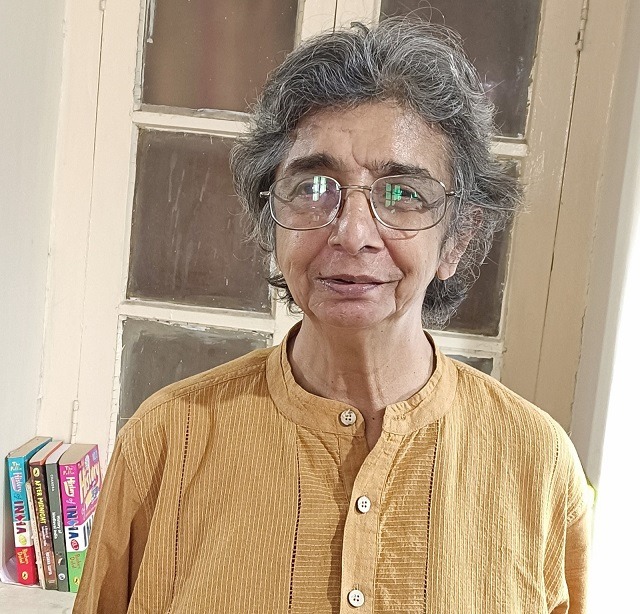
The eldest son of Ghiyath al-Din Tughluq, founder of the Tughlaq dynasty, Muhammad bin Tughluq (1290 – 1351), was named Juna Khan as Crown Prince. The eighteenth Sultan of Delhi, he reigned from February 1325 until his death in 1351. His successor was Firoz Shah Tughlaq. In 1321 and 1323, Ghiyas-ud-din sent the young Muhammad to the Deccan to campaign against King Prataparudra of the Kakatiyas dynasty, who had their capital was at Warangal. Muhammad bin Tughlaq was one of the most knowledgeable scholars of his time. He spoke Arabic and Persian and was well-versed in philosophy, astronomy, logic, mathematics, and physical science.


Muhammed was one Sultan who participated in Hindu festivities but the visitors Ibn Battuta, Nunez and Firistha mention that the Sultan, Muhammed Bin Tughlaq showed intolerance to other religions In 1333 Ibn Batutah a Moroccan traveller arrived in India and was appointed as the chief Qazi of Delhi by Muhammad-bin-Tughlaq. In 1347, the sultan granted 2 permission and dispatched Ibn Batuta to the court of the Chinese emperor. The Sultan maintained good relations with foreigners, and the Chinese ruler sent an envoy to him. Toghan Timur (AD 1341) came to seek permission to rebuild Buddhist monasteries destroyed during the critical expedition in the Himalayan region.

The visitors have left invaluable accounts of Muhammad- bin-Tughlaq’s reign. Muhammad Tughlaq implemented numerous measures to improve the empire’s administration. Muhammad bin Tughlaq increased taxes in the Doab region to replenish the treasury. People fled to the forests to avoid high taxes, causing cultivation to be neglected and a severe food shortage. Taxation was increased ten to twenty times and taxes were raised at a time when the Doab was suffering from famine due to a lack of rain. Instead of paying taxes, the peasants abandoned their lands and turned to highway robbery. Tax collectors continued to collect taxes through tyranny, resulting in widespread revolts. Muhammad Bin Tughlaq established a separate agriculture department.
The primary goal of this 3 department was to increase the amount of land under cultivation. A minister, Amir-i-kohi, was appointed to oversee the schemes. However, The experiment failed and the scheme was abandoned after three years. The failure of the scheme was caused by the officer’s corruption The Sultan’s main goal was to implement a uniform standard of land revenue across his empire and ensure that no village went untaxed. One of the measures was the creation of a register in which all of the princes’ income and expenditures were recorded. Muhammad bin Tughlaq tried to relocate his capital from Delhi to Devagiri (Daulatabad) ordering the common people and government officials to relocate to Devagiri; after much difficulty, he ordered them to return to Delhi.
The empire had spread throughout India’s territories, and Daulatabad was more centrally located and strategically placed than Delhi. The administration and consolidation of south India required more attention than the north. The capital had to be safe distance from Mongol invasions or, on the contrary, the absence of danger from Mongol invasions. The Sultan wanted to spread Muslim culture in the south were all reasons for the Sultan to transfer the capital to 4 Daulatabad. There was the temptation of wealth in the south, and, most likely Muhammad bin Tughlaq established the copper currency system but because the value of coins fell, he was forced to withdraw the copper token currency.
Muhammad Bin Tughlaq introduced a variety of coins. The introduction of token currency and the issuance of copper and brass coins were notable features of the coinage system. The copper coin was known as Jital (Paisa). The introduction of token currency and the issuance of copper and brass coins were notable features of the coinage system. The Tanka (rupee), a silver coin as well as a copper coin were issued. The Sultan declared the token coins legal tender and set their value at the same level as gold and silver coins. Citizens began minting token coins in their homes. Both the Sultan and his subjects were to blame for the scheme’s failure. The Sultan’s plan was a complete failure and he lost favour among his subjects. Muhammad bin Tughlaq died in March 1351 while conducting a war in Sindh against the Taghi, a Turkic slave clan, and trying to chase and punish the people for rebellion and their refusal to pay taxes in Sindh (now in Pakistan) and Gujarat (now in India).
Lakshmi Rameshwar Rao, Heyderabad
(The writer has a Masters in Adult Education from Jamia Millia Islamia. She has many years of teaching experience at the school level as well as ten years of experience in the book publishing industry. Her work has been published in newspapers and a few syllabus books as well. Lakshmi has retired and now lives in Hyderabad.)
Bishop Cotton School Students Embark On Transformative UK Cultural Tour





